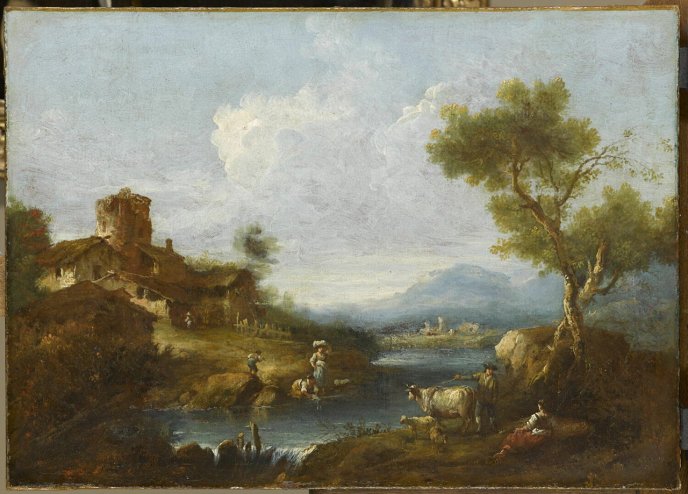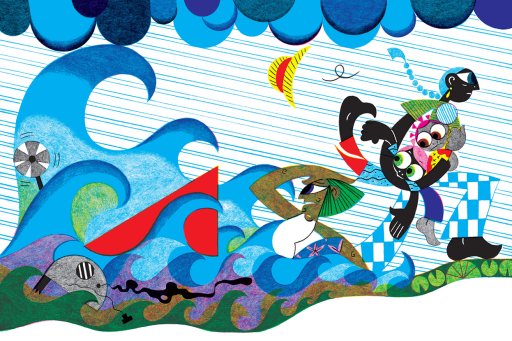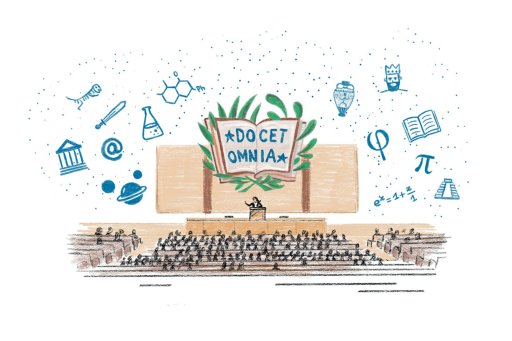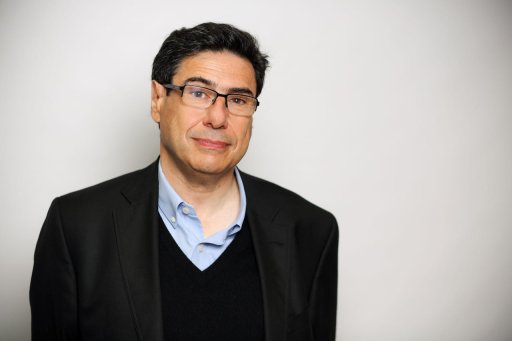Louise Gentil , under the supervision of Collège de France professors Patrick Boucheron and François-Xavier Fauvelle, is conducting research into irrigated agriculture in Italy between the 13th and 16th centuries. Supported by the Avenir Commun Durableprogram , the team is helping to build the recent field of environmental humanities, by examining the relationship between pre-industrial societies and their environment.
Peasants working their land modestly to feed themselves, natural elements still difficult to tame, low harvests... This is often the idea we have of agriculture in the Middle Ages. But the reality is different, reveals Louise Gentil, a new doctorate in medieval history. Under the supervision of Collège de France professors Patrick Boucheron and François-Xavier Fauvelle, she is studying the case of irrigated agriculture in Lombardy between the 13th and 16th centuries. In doing so, she seeks to understand the relationship between humans and their environment in this region of northern Italy, and questions the preconceptions we may have about this period.
Complex farming systems
" We tend to believe that in the Middle Ages, man still had to conquer wilderness to acquire resources. But this is a myth constructed by certain actors of the time, notably the monks who told of settling in deserts or forests to be cleared, in order to transform them into productive areas ", explains Louise Gentil. In reality, the state of nature no longer existed at the time : Europe was completely anthropized. There was a logic of management of the entire environment, largely at the service of human beings. We also have a misconception about farming systems in the pre-industrial era : we often think that subsistence farming was all that existed," continues Louise Gentil. In other words, a farmer's harvests only enabled him to cover his own needs... In Lombardy, however, we can observe complex production systems that go far beyond subsistence. " As early as the 11th century, this geographical area, the watershed of the River Po, underwent major water management projects : canals were dug, irrigation systems and dams were created to regulate the flow of water, and mills were built... Land that had been destined for cereal production was converted into irrigated meadows and used to produce hay in very large quantities for flocks or for Milan's military cavalry. Irrigation consortiums, made up of institutions and landowning families, were even formed in the 13th century to manage the canals and defend the interests of each party. This demonstrates the existence of economic strategies as far back as the Middle Ages : production choices, investments and the quest for land profitability were already being made. This is a far cry from the image of peasants producing barely enough to survive..
Sustainable agriculture ?
Another preconception about medieval agriculture is its supposed sustainability and respect for the environment. " In history, the study of industrialization has made all previous production techniques seem non-intensive and sustainable. But this is not necessarily the case ! ", exclaims Louise Gentil. Medieval agriculture certainly didn't have the same impact as today's industrial agriculture, but that doesn't mean it was necessarily virtuous. " Medieval agriculture was highly intensive in some areas, as can be seen from both the facilities built and the manpower mobilized. In Lombardy, for example, twenty-four workers could be employed to maintain a single irrigation canal in a single day. " It could also be destructive : slash-and-burn farming, for example, was practised, in which the vegetation on a plot of land is burnt before it can be cultivated. Today, this technique is considered deforestation.
While these are valuable readings, many questions remain unanswered. " We know that ecclesiastical institutions were major landowners and that they played a major role in the organization of irrigated agriculture. But how precisely did they manage their productive spaces and the work of peasants ? ", asks Louise Gentil, who also wonders how irrigation consortia, production systems and, more broadly, Lombard society were organized at this time... She continues her investigation.
From case study to methodological reflection
To carry out her research, the historian studied all types of documents produced by those involved in Lombardy's agricultural world over the centuries. The collections of abbeys and communes are important databases. She works, for example, on notarial deeds from the period and numerous maps of the region, both medieval and recent." But the way in which we approach the sources is a key issue. We have to be careful not to project our current vision of agricultural production onto these areas ", explains Louise Gentil. She is also working on the creation of a cartographic database, drawing on all the spatial documentation she has been able to glean." To represent the evolution of waterways and canals over the centuries, I use a GIS, a geographic information system. This raises a number of questions, as the aim is to create a digital tool that can be used by several researchers, all of whom can access and modify the data. In short, to create interoperability .
These methodological issues play a major role in the historian's work, and she has adopted a reflexive stance right from the start of the project. In fact, it is articulated between a survey of agriculture in medieval Lombardy and a reflection on the very framework of this work. One feeds the other. Louise Gentil studies a particular case but, when she comes across one, reflects on the more global issues at stake in this research." The aim is to build a discussion that will be useful to all researchers wishing to carry out projects of this type. All the more so as French environmental history has long focused on industrialization and its beginnings, leaving little room for other questions. What methodological framework should we put in place when we want to begin an environmental history investigation of the pre-industrial periods ? ", asks the project team.
Thinking environmental humanities
Patrick Boucheron, François-Xavier Fauvelle and Louise Gentil are therefore exploring this field of research, which they call " environmental humanities ". It's a term that's still not widely used." Researchers tend to say they are doing environmental history, environmental archaeology, environmental philosophy... But we are deliberately talking about environmental humanities, a field of study that is resolutely interdisciplinary and still new ", points out Louise Gentil. The aim is to bring together different viewpoints and disciplines, in order to answer new questions. Over the past twenty years or so, environmental issues have become a central social concern, impacting all the social sciences. Faced with the destruction of its living environment, society has sought to gain a better understanding of previous periods in order to learn from them." Environmental issues have thus renewed the scientific questionnaire. We question the same sources, but in a different way, asking, for example, if it is possible to identify a landscape or a certain use of resources. We're now asking how medieval people thought about their environment, their resources... " Added to this are new scientific data, provided by new research methods developed from 1970 onwards. Recent techniques such as glacial and sedimentary coring, palynology[1] and dendrochronology[2] are providing new indicators of ancient climates and how societies used the environment. Faced with such an abundance of questions and documentation, the team wanted to obtain clear theoretical instructions for use.
A study day to establish a theoretical framework
Because there are still few books, symposia or forums for theoretical exchange on these issues, the three researchers decided to organize a study day." The Collège de France is a particularly suitable venue for this kind of discussion, and the Avenir Commun Durable program provides us with a solid framework for long-term research projects ", Louise Gentil points out. The team will therefore be bringing together specialists from different disciplines - archaeology, history, anthropology, philosophy... - who have been working for several years on the relationship between humans and the environment. They include historian Grégory Quenet, philosopher Pierre Charbonnier and archaeogeographer Magali Watteaux. Researchers will be able to take stock of their work, explain how their issues have evolved, and share best practices observed during their investigations that would benefit from being disseminated. But this pooling of knowledge doesn't stop there." We'll be asking ourselves how we can all work together. We need to think of ways in which researchers from different disciplines can collaborate, but we also need to consider how to train students. In my opinion, this starts with agreeing on terms, on a questionnaire, on a common way of conceiving surveys ", completes the historian. She hopes that this study day will lead to the creation of a longer-term think-tank. A valuable contribution to the development of environmental humanities.
Salomé Tissolong, journalist
[1] Palynology studies current or fossilized pollen and spores to trace variations in the plant environment over very long periods.
[2] Dendrochronology is a scientific method of dating past events or climatic changes by studying the growth rings of tree trunks.











